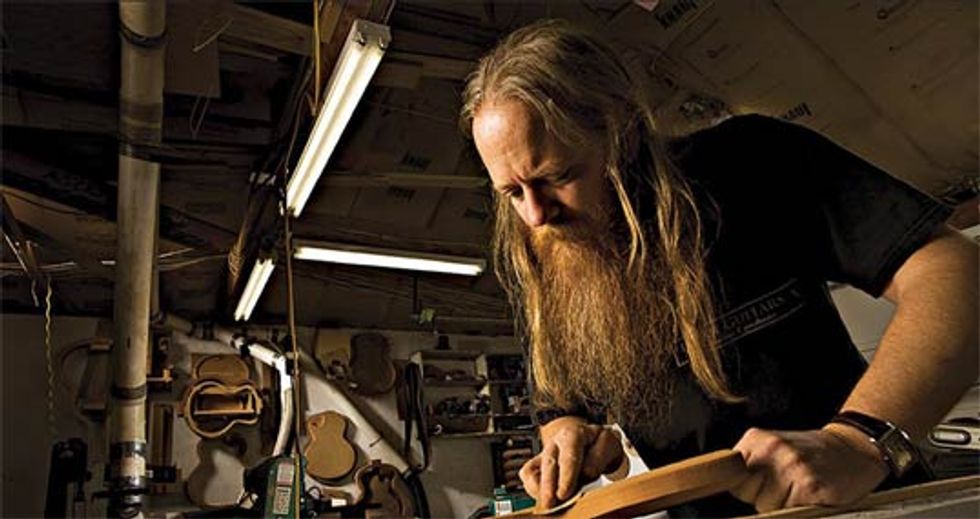 |
|
For many tone chasers, Jason Lollar is something of a god. And why not? The man who resembles an ancient Greek deity himself, with a thick beard and long, flowing hair effortlessly draped over his shoulders, exists on ferry-bound Vashon Island, miles off the coast of Seattle and is literally bringing tone to life. While he has a bustling, professional operation—he can claim nine full-time employees, including his wife, Stephanie, and his daughter, Terra—there’s this image of him that persists in the guitar world, of a solitary man hunkered over a winding machine, dedicating his life to the alchemy that first birthed rock n’ roll. His out-of-print book, Basic Pickup Winding, has become the bible for burgeoning builders and a literal collectors’ item, with rare copies fetching upwards of $250 on eBay. He keeps a low profile, and skips the NAMM booth. Even on the opening page of his website, there is an image of Jason, surrounded only by walls of guitars and a floor full of amps; he’s looking off into the distance at something, nothing. Indeed, it can be said that Lollar makes a bold statement without having to say much at all.
|
Of course, this near-deification isn’t unfounded; Lollar has designed and created some of the best sounding pickups on the market today, including—according to many guitarists—the P-90 to end them all. You’ll find his work in the top of the topend guitars on the market, from Collings to DeTemple to Fano. And unlike many pickup builders today, Lollar is not a specialist; he doesn’t spend all of his time studying the minutiae of a specific vintage model, hoping to unlock some great secret. He instead is a generalist, thinking in bigger swaths and applying well-honed concepts and years of experience to all of his pickups; it has resulted in an extensive range of choices for players, and has ensured that no one is left out in their search for tone.
We spoke to Lollar from his Vashon Island home about the perfect P-90, the fallacies of pickup design and the importance of technique.
How did you originally get into the pickup business?
I got really serious about it a couple years after I turned 30 – around 1992, kind of an early mid-life crisis. I had played clubs for years and was locally successful; we were always booked but it was a dead end financially, so I really started pushing my guitar making. I was building an archtop line and outfitting them with dog-ear P-90s and solid carved tops and backs with gorgeous, well executed curves. I was taking those around to shows, and when people heard I made the pickups, they were obsessed by it and promptly forgot about the guitar.
The rest of the story I have told before; around 1995, I wrote a book on making pickups with the idea it would be a big business card for my guitar making business. People started calling for pickups to the point where I had no time to do anything else. It was really being in the right place at the right time, but I took it seriously, recognized the opportunity and had the right skills to pull it off.
The first few years after the book came out, I was making a lot of purely custom items – 8 string, 13 string, hexaphonic, 16-inch long blade pickups, exact reproductions of thirties and forties pickups, and even pickups that were not guitar-related at all. I had been making P-90s in small quantities since 1979, but then I got introduced to the guys at National Guitar and they wound up being the first well-known guitar company to use my pickups as a stock offering in their guitars – my P-90 in their Resolectric. The P-90 has been and still is my flagship pickup.
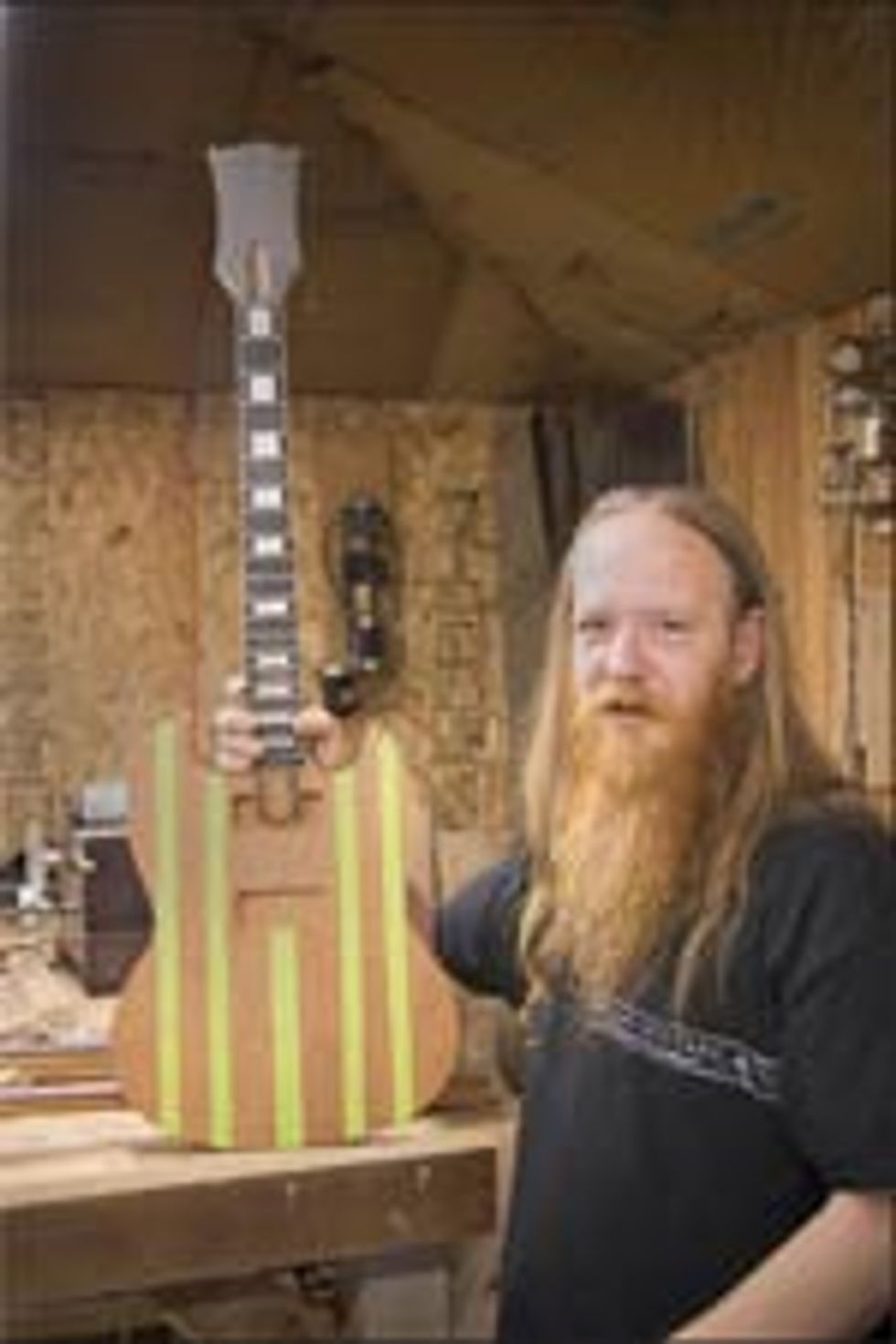 When did you first fall in love with the P-90?
When did you first fall in love with the P-90? Well that was Semi Moseley, Bob Venn and John Robert’s fault. They use to teach students how to wind pickups at Roberto Venn. We’re talking very crude, rudimentary pickup designs similar to old Bigsby and Japanesemade pawnshop guitar pickups. One of the designs was a single-coil pickup which was a variation on a P-90, so I have made those since the beginning. Everyone probably remembers back in the seventies you would see LP Juniors and ES-125s in people’s basements, sitting in the corner; P-90s are an old design we all remember taking for granted.
I’ve been repairing and building guitars since the mid-seventies, but didn’t really get into any kind of quantity until the early-nineties. However, I made every pickup for every guitar I’ve built since I attended Roberto Venn. That said, I hadn’t perfected my method until the mid-nineties; everything I made before that was quite crude and I used whatever materials I could find. I’ve made and sold more P-90s than anything else; they started getting popular again around 2000-2002, so I was already there to supply a lot of that demand.
What’s the secret to an amazing P-90?
P-90s are about the midrange, but you can go too far and lose the detail and punch. You also need to build in a certain amount of microphonics and it needs to have some power for most people to like them, but a P- 90 also has to have some sensitive qualities or it becomes more of a caricature—meaning all midrange and no dynamics.
The boutique pickup market has absolutely exploded. What does “boutique” mean to you? Do you see yourself as one of the cornerstones of a fast growing sector of the industry, or do you prefer to remain outside it completely?
Obviously Seymour, Dimarzio and Bill Lawrence, maybe DeArmond/Rowe if you look back far enough, started the aftermarket pickup industry. However, boutique – I guess I can get along with that term – started somewhere in the late eighties, early nineties; people like Andy Marshall came along and started making copies of old Fender Tweed amps – guitar makers followed.
We are in the new Golden Era of music equipment right now. There have never been so many choices for the consumer and the climate is supporting it. People are generally way more educated about their gear and they are demanding more.
Boutique to me means a business that specializes in a product or service that is often ignored or is not replicated by big businesses for various possible reasons. Smaller shops can respond quicker to new demands, and are generally more experimental than big companies. The bigger companies can stomp on us with quantity and lower costs, but “boutiques” can be more unique and innovative. Boutique also implies the service is more tailored to the individual and generally better and/or more informed and current than you’ll find in, say, a chain store.
As far as being a cornerstone – that’s a pretty heavy word. I was ready to go at the beginning of this expansion, and I just kept my head down and worked along with everyone else. So I am in a position the newer guys are not. When I started playing blues clubs in the early eighties, the established guys were all 20 to 40 years older than me; I was the new kid. I am kind of in a reverse position now.
If you use the word cornerstone as meaning being integrated with many other companies at a level you might consider as fundamental, then yes, I could be considered a cornerstone. If you look at all the guitar ads in magazines for the medium-to-smaller size companies, I could go through any guitar magazine and point out one ad after another, “That’s my pickup, that’s my pickup, too and there’s one.”
What matters more in recreating classic pickup sounds: having the correct materials or the technique that goes into it?
It’s both of those factors and, more importantly, it takes experience working with different designs, techniques and materials. I have seen guys get obsessed with finding materials that have closer resemblance to vintage pieces and still miss the mark, and I have seen other builders think that they had rediscovered some previously unknown technique and work that angle to death. Making pickups to me is much like playing guitar: the more you play and learn, the better you sound.
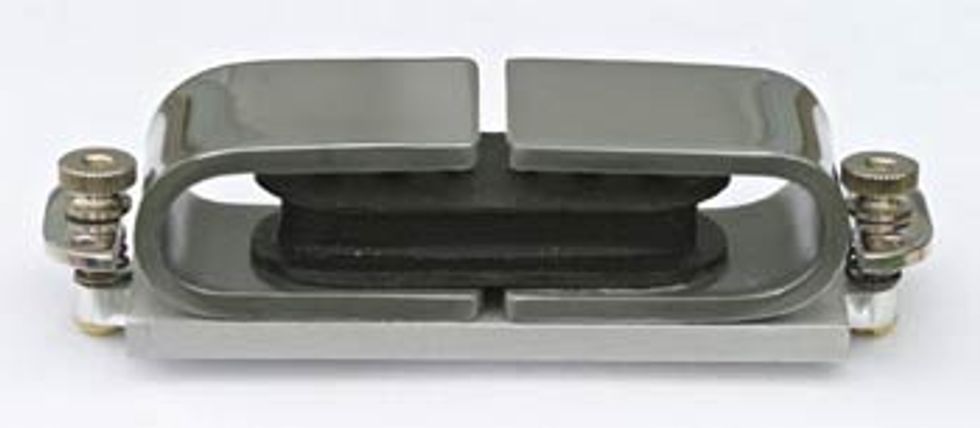 |
|
|
What is it about an Alnico magnet that makes it a near-standard for guitar pickups? Can you construct a great pickup with ceramic magnets?
Remember this is old technology, so before Alnico the magnets were these huge horseshoe or great big bars like you see on old Rickenbackers. The next “permanent magnets” were Alnico. By the time electric guitar design was really getting strong – the late forties to the fifties – Alnico was the primary magnet used. You don’t start seeing ceramics on guitars until the early sixties. So part of this is traditional; Alnico magnet pickup designs are what we have become use to as a standard of good tone.
Alnico and ceramics have different magnetic and inductive properties. In the early sixties, when ceramics became available and some guitar companies used them (probably for their cost savings, which is approximately 30 percent the cost of Alnico), they left the overall pickup design the same and did not bother to accommodate for the difference in magnets. The sound was thinner and overly bright with less dynamic range.
Of course, you can make good sounding ceramic pickups; I have one stock model that uses them – the Chicago Steel. I sometimes use them on custom items also if there is some size restriction. I would like to point out your questions are really quite good and I could go on and do a whole tech geek article on ceramics and Alnico and how their properties differ.
What about players that evaluate pickups strictly by their output levels? Is there a problem today with people buying replacement pickups that are entirely too hot for their setup?
You can’t always compare resistance between pickups and expect the higher resistance to have more power; all that tells you is... well, not much. If you know the diameter of the wire, the resistance will tell you how many feet of wire are on the pickup. The amount of turns around the pole pieces is primarily what increases output – more turns equal more output. Of course, the magnetic field strength and the core material used also affects this, but if one pickup has a longer coil than another – let’s say a Jazz Bass and a Strat – the Jazz Bass will read higher because it has a longer coil of wire, but it may not have more output. There are other technical points we could go on about – thicker or thinner wire, how air temperature affects resistance – but more importantly is how the pickup couples with the amp. There are a lot of technical points about this but let’s keep it simple.
One thing you’ll find occasionally on cheap guitars are really hot pickups. For the uninitiated buying their first guitar, imagine plugging a $5000 Gibson into a cheap practice amp and then plugging in a Brand X with a hot ceramic pickup. “Wow, this one is louder, it’s got to be better, right?” Really though, if you listen to old Fender amps, like a Tweed Deluxe for example, when you plug in a Tele or a Strat and crank it up, it will sound fat and really detailed at the same time. Plug a Les Paul in and it gets overly muddy and distorted – maybe you like that, but it makes it really hard to hear what you’re playing from the audience’s perspective. A better Fender amp for a Les Paul would be a Super Reverb – much less midrange from the amp. Your Les Paul already has plenty of mids, so why add more to muddy up the tone? Also, the Super Reverb has more treble available, which humbuckers often lack, plus the amp can handle the extra bass the humbucking pickup generates, so it stays tighter and clear on the bottom.
Most people are hip to how different amps will match better with some pickup designs than others, but often people just getting into electric guitar tone don’t know how to get good tone. The number one rule of thumb is don’t overload the amp too much. Everyone likes at least a little distortion, but if you go too far it becomes muddy. I see a lot of guys in clubs, usually humbucker players, that need to turn the bass down on the amp, turn the volume down a notch because they have a little too much distortion and bass to be heard clearly, and turn the reverb down because there is too much hashing. My idea behind pickup design is if you can’t get a good clean tone, you won’t get a good distorted tone.
Your selection of replacement options for lap steel players is fairly notable; how did you discover the lap steel? Do you find a kind of historical lesson in examining lap steel pickups?
I first noticed lap steels when David Lindley came on the TV wearing spandex and a Japanese flag headband with a power trio playing eighties hair metal butt rock – ripping it up sounding just like Eddie VanHalen. It was hilarious and at the same time so odd to hear that sound coming from that instrument. The next time I saw Lindley was at an El Rayo- X concert, which is more of a reggae/ska kind of tight rock band, and the sound he was getting was almost as fat as a Hammond organ. I ran out to the shop the next day and built a lap steel within that week; that would have maybe been 1987? Later on I played in a roots country band on a Fender Triple 8 Stringmaster. So by the time my pickup business started to take off, I was into playing a non-pedal steel.
The Steel Guitar Forum became my regular hangout for some time. The people on that forum were great. If I wanted to see a 1939 [Gibson] EH-150, I would post it on the forum and someone would ship one to me on loan! At one point I was making pickups for all of the newer lap steel builders and making custom pedal steel pickups to retrofit into new steels to give them that old sound. Steel guitar was half my business – the rest was repairs, new pickups and P-90s.
The interesting thing about old lap steels is the pickup designs are often quite different than what you commonly see now. Often they used a similar coil for instance, but they would substitute an entirely different magnet from one year to another. Also, Gibson made pickups for other brands – I don’t recall all of them offhand, but externally the pickup would look very similar; internally they would usually have some cost cutting measure. You can see some really odd designs that seemingly wouldn’t work if you only read about conventional pickup designs like in the Brosnac book [Guitar Electronics for Musicians]. Sometimes you’ll notice features on older pickups that resemble more modern pickups, in a crude sort of way and are probably intended to function quite differently. At any rate, [lap steel pickups] are interesting to examine and they can throw your conventional thinking a curveball. You might also come to the conclusion that it’s all been done before at some time and place.
I understand that nearly every pickup you make goes through a wax session in a classic Crock-Pot. What are the pros and cons of wax potting, in your mind?
I could go on about this for some time but let me start by saying I was once adamant about not potting anything I made, but that attitude has been tempered through experience. For instance, on Fender style pickups—Strats, Teles and any variation using that type of construction—the wax actually helps hold the pickup together, preserving it from becoming more microphonic over time. If your guitar gets bumped, the coil can shift and become loose if the pickup is not potted. This happens on vintage pickups quite often. I get calls all the time from people complaining about how their vintage pickup all of a sudden became too microphonic to use.
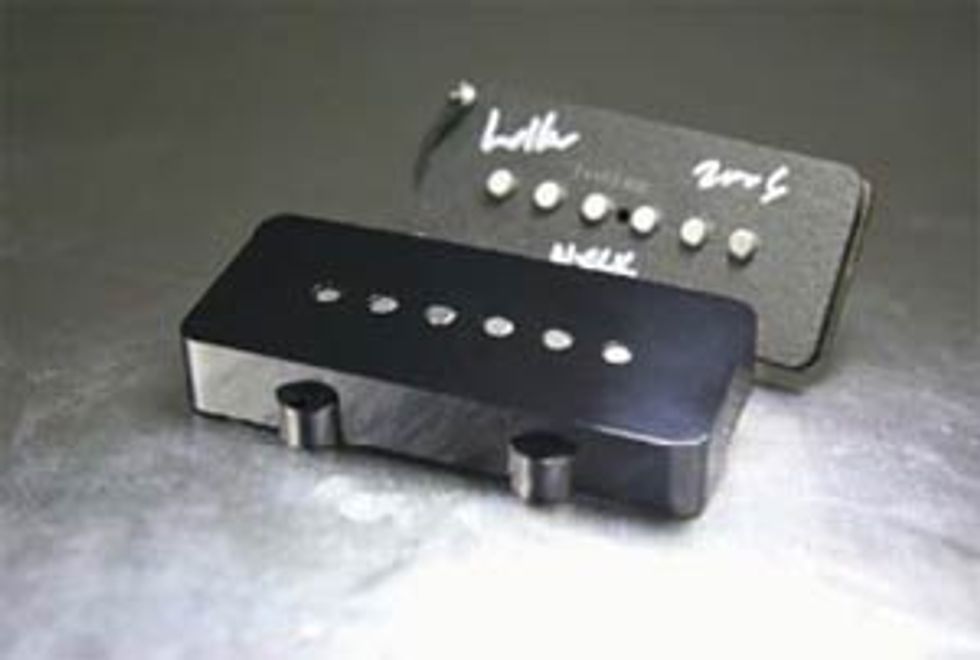 |
|
|
“Scatter wound” shows up frequently on your website, and is a frequently used buzzword in the boutique arena. Could you define that technique for our readers and how it affects the sound of a pickup?
There are different definitions of what scatterwound means. I think most people use it as a term to differentiate between winding by hand, which means guiding the wire back and forth by hand in a more random pattern while the pickup is spun with a machine, versus a machine that automatically traverses the wire across the pickup for you. It’s argued that the machine lays the coil with each layer of the wire parallel to the next which increases the way the coil acts like a capacitor and makes it bleed off treble as capacitance increases. In practice, auto traverse machines don’t really work like that.
Scatterwound can also mean that you are using more pitch to the traverse; this means rather than going across from side to side of the coil, traversing the distance once for each 100 times the coil rotates, you go across 20 or more times per 100 rotations. Another way to look at it is if you unwind a pickup with one traverse per 100 rotations, you would unwind 100 turns before the wire changes direction across the coil and in the latter you would unwind 20 turns before the wire changes direction. Less turns per layer makes a bulkier coil with more air space in it, which normally translates to a clearer tone that can also sound fatter at the same time.
How do you maintain consistency when you’re hand-building everything?
I have a lot of experience manufacturing, mostly in small shops doing production items. We are actually fairly advanced as far as techniques for quality control, and without knowing it until recently I sort of followed a system called Total Quality Management – most of this is common sense once you get a lot of experience in a production environment, but TQM is actually a more elaborated and clear set of principals. Basically it’s a way of keeping track, working to a certain level of quality with the product and extends all the way to how you deal with your customers.
As far as the pickups themselves, we have collected and charted all of the dimensional variations, turn counts and electrical qualities. We have averages for thousands of samples. Every step of the process is compared to these numbers and we make sure they match up to within a certain percentage. If something is off then I start investigating what the variables are or I find out if there is a problem. There are times I will have to reject a product if it doesn’t make the grade – we don’t sell seconds, but anymore I have the procedures down, so any problem is usually caught early on and resolved before a number of off-spec pickups are made. Every pickup goes through about 12 different testing points that occur all throughout the building procedure. Having talked to a lot of other pickup makers, I know I have one of the most rigorous testing routines used. Having made as many pickups as I have, in some ways it makes it easier to find inconsistencies. Making 30 of the same pickup at a time instead of one makes it easier to spot a pickup that is off-spec from the others. If you make one at a time, it’s harder to tell if the resistance is off from a short circuit, wire thickness variations, air temperature differences or some other variable.
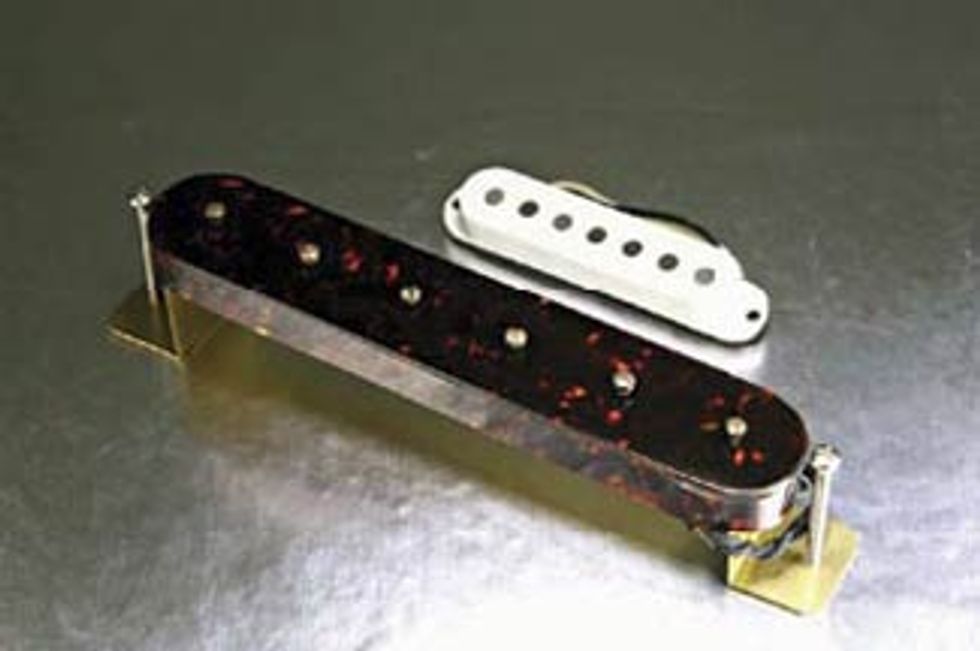 |
|
|
I have a feeling the wire in the coil does change a little with age, but I have no way to prove that. The old magnets do have some different impurities than new ones—I have sent parts off to be vaporized and run through a spectrum analysis machine. Also, magnets will discharge to various levels after they are put into most types of pickup assemblies. Most old pickups, if you recharge them, will read noticeably higher than before. On most of my pickups, I discharge the magnets partially— various levels of magnetic strength do sound noticeably different. I try to make each pickup design I sell sound as best as it can. I developed all of my line over time, making changes and comparisons to previous versions to really polish the results.
I listen to countless vintage instruments and compare them to my pickups as well. Often there is some difference, but even old pickups sound different from each other. I am not completely concerned if mine sound exactly like some vintage example. My concern is that if you were to compare mine, would it sound favorably similar? Even to the point where the difference it has is considered a strong point, worthy of getting a comment that it may even sound better than the best vintage example.
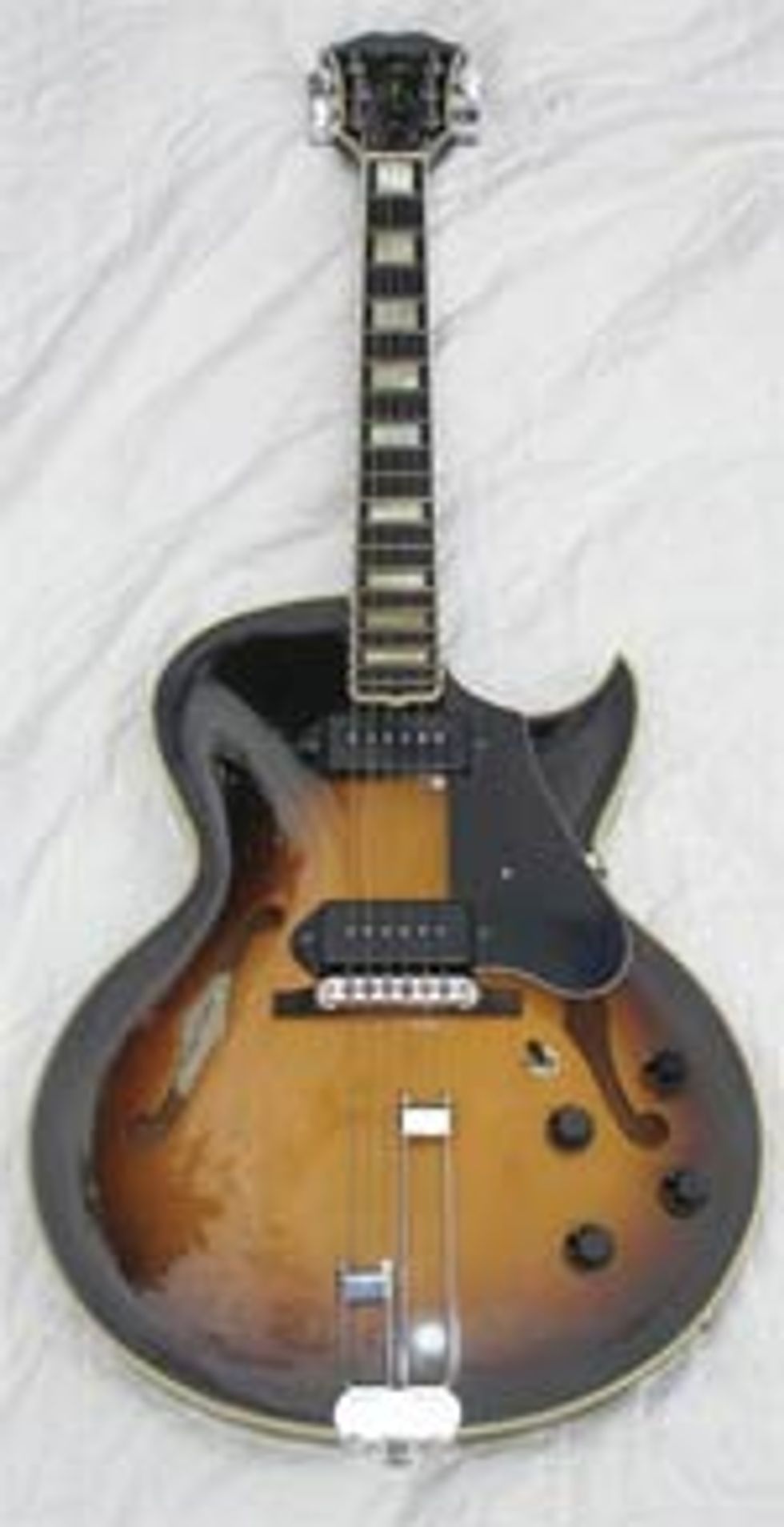 |
|
|
A lot of the claims and theories out there have just been repeated over and over—copied from one book or article to another for decades without having anyone examine them. If it sounds like BS, it probably is. There is no truth police for advertising. If someone is saying they have discovered some secret no one else has, it’s probably BS. If they are way undercharging everyone else but saying it’s of similar quality, it’s probably BS. One thing I see repeated over and over is the claim that just because a pickup is hand-wound means it’s better than anything else. Claims like, “My hand-wound pickups are better than any machine-wound pickup,” with hand-wound meaning hand-guided traverse. I would bet most of the guys claiming that have never run an auto traverse machine, so they can’t honestly know what the difference is. It’s not just how it is wound or just what materials are used; it’s all of that together plus having a vision of what outcome you want as a result. If you can’t make it consistently, you don’t have anything.
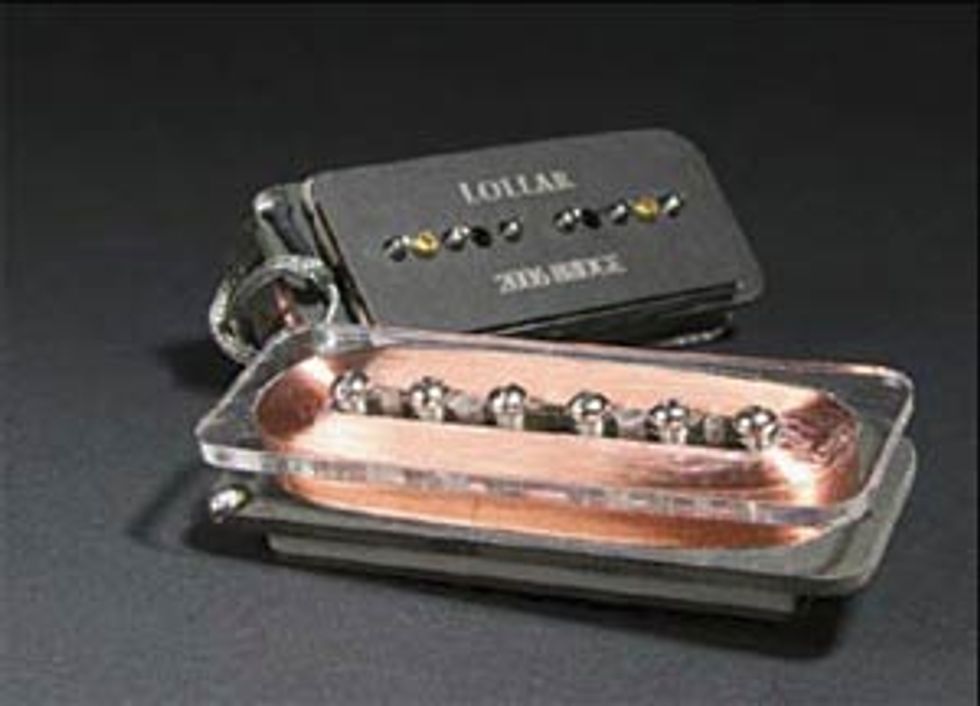 |
|
|
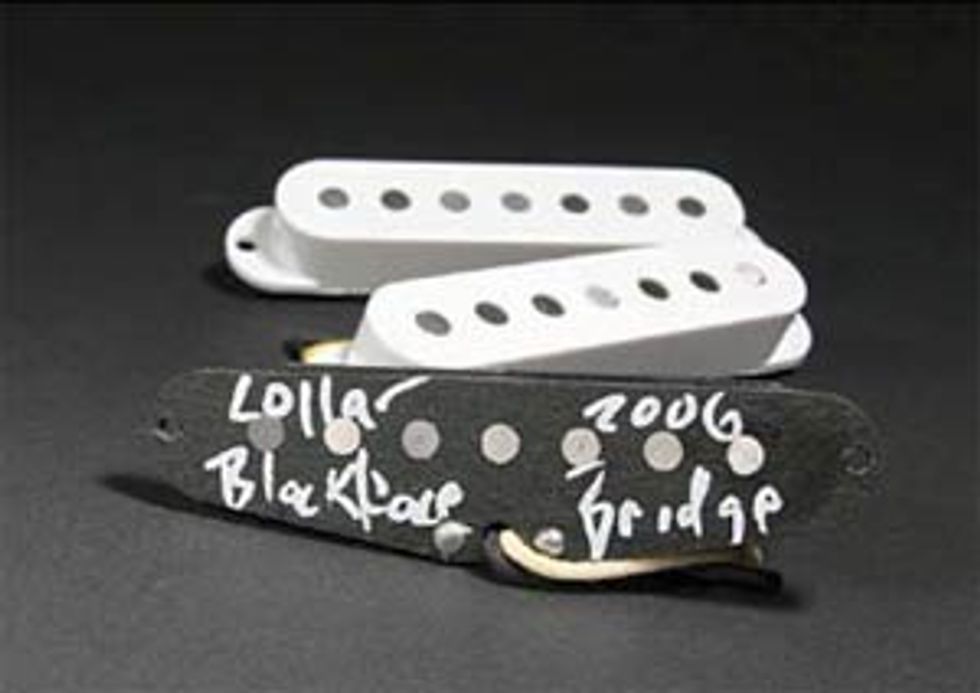 |
|
|
My business has been growing from the start; I have tried to limit it to a level where I can keep on top of the jobs I do take and keep the quality and personal service at top level. But I am not the kind of person that will sit back and ride on my past accomplishments. Expect to see more stock designs available, new design families and unusual offerings. I will probably be going out to more vintage shows, so be looking to see me around more.
At this point I have a really good crew and have learned a lot of hard lessons about what types of people I want working with me and how to pull everyone together as a cohesive unit. I have always been cautious about claiming that I have made my mark, but a couple of years ago I finally had to admit that all that hard work has paid off. I’m doing something I like, on my own terms and that’s a great place to be.
You did attend Roberto Venn and graduated in 1975, and there are even some guitars featured on your website. Is there a part of you that would secretly like to be known as a guitar builder, instead of a pickup expert?
Oh, I like to build guitars but I would be a fool to wish for something different at this point. I could stop making pickups and transition into building more guitars but I have so much time invested in pickup making now that it wouldn’t make sense. I feel my experience as a guitar builder gives me a different perspective than I would have without it – that and the time I spent gigging. I have a whole set of experiences I draw on that a lot of other pickup makers don’t have.
Anymore, I only build one guitar a year and I am going to end any official guitar commissions at my next website redesign. I will have a gallery where you can see the guitars I have made. Who knows – maybe down the line I will get back into it. But at this point it’s just a part of my background rather than a focal point.
It really comes down to this: if I’m going to make pickups to a higher level of quality and consistency, I won’t have time to build guitars and vice versa. If I’m going to build guitars to that level, I won’t have time left over to devote to pickups.
What’s your view of the guitar industry today?
Like I said previously, I think that guitar, amp and related accessories are at an all-time high, as far as selection and quality for the consumer. As more people enter into manufacturing, even on a one piece at a time basis, it will increase competition among manufacturers, and eventually if we get more offerings than the consumer will support, you’ll see those businesses that have some weakness in their product or service are going to drop out. At this point it looks easy to get in the game. But I have seen so many people start up and drop out within a year or two. There are plenty of guys that have struggled and not made it. You really have to have both the hands-on, artistic side and the practical business sense, and as more people enter it will be harder to get established. Those that work hard and make good choices can do well, but there is going to be a shake-up eventually where only the best will come through the other side. The good news is the quality will be better than ever on the premium products.
We are already seeing companies selling Korean and Chinese products and calling them “boutique quality” or designed in the USA with USA materials (meaning made in Korea). I like being competitive, and even though Korean guitars are multiple times better than they were 30 years ago, I am confident that USA workers can out-do them. I keep my eye on what other people do. Right now there is a push for high-quality USA companies to have a lower-priced line made overseas – it’s the nature of the business climate right now – but I have enough on my hands to do, and I am committed to the people that work in my shop here in the USA.
Jason Lollar Pickups & Custom Guitars










![Rig Rundown: Russian Circles’ Mike Sullivan [2025]](https://www.premierguitar.com/media-library/youtube.jpg?id=62303631&width=1245&height=700&quality=70&coordinates=0%2C0%2C0%2C0)







